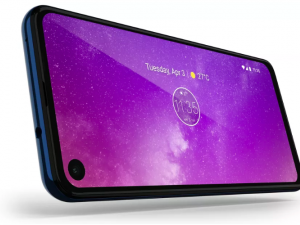A Brief History Of The Apple Watch
Michael Grothaus 15/02/2019 – 2:42pm
Apple’s wearable has changed a lot in its short life.
When you think of Apple, you almost certainly immediately think of the Mac, the iPhone, and the iPad. But Apple makes a ton of other devices, from AirPods to battery packs. And when it comes to major products, Apple, of course, has the Apple Watch.
The Apple Watch was first announced by Tim Cook in September 2014 and the first version of Apple’s wearable shipped the next year in April. Since its birth, the Apple Watch has radically changed–especially from the way it was first marketed.
Let’s take a look at a brief history of the Apple Watch to see how far it’s come.
The Original Apple Watch

The first Apple Watch didn’t have a Series number, as subsequent Apple Watches would. Yet there were actually three different lines of Apple Watch when it debuted. The first was simply called “Apple Watch”–this was the everyman edition that was made from stainless steel. Then there was the Apple Watch Sport with bands and an aluminum build made to appeal to athletes. And finally, there was the Apple Watch Edition made from 18-karat gold.
As you can probably guess from the gold used to make the Apple Watch Edition, it was marketed as a fashion accessory and the price topped out at $17,000. Needless to say, the Apple Watch Edition didn’t sell well at all and was dropped the next year.
The original Apple Watch (all models) came in 38mm and 42mm sizes and featured Wi-Fi and Bluetooth. Internet access required a pairing with an iPhone. All also had a Digital Crown, Multi-Touch, Force Touch, Digital Touch, and Side button. All also sported an optical heart sensor.
Apple Watch Series 1 and 2

The following year Apple unveiled its first update to the Apple Watch lineup. As already stated, gone was the uber expensive Apple Watch Edition. They also got rid of the “Apple Watch Sport” moniker.
Instead, Apple renamed an updated version of the Sport (because it had an aluminum build) the Apple Watch Series 1. They dropped the price a bit to make it the new entry-level model that is affordable for most people. It retained similar features that the original Apple Watch had: a Digital Crown, Multi-Touch, Force Touch, Digital Touch, and Side button.
Apple also introduced the Apple Watch Series 2 that year. This model again has an aluminum body, but its main distinguishing point was that, unlike the Series 1, the Series 2 had built-in GPS. This meant you no longer needed your iPhone paired with your Apple Watch to get location data.
Apple Watch Series 3

The following year, Apple introduced the Apple Watch Series 3. The big difference here is that the Series 3 added a cellular option. For the first time, the Watch itself could connect to its own mobile Internet–further eliminating the need to pair the device with your iPhone.
Apple Watch Series 4

The Apple Watch Series 4 is, as of the time of this writing, the most recent Apple Watch. Unveiled in 2018, the Series 4 featured some major upgrades over the Series 3. The first is that the Series 4 featured larger displays. Instead of coming in 38mm and 42mm sizes, the Series 4 came in 40mm and 44mm sizes while retaining roughly the same footprint of the Series 3.
The other huge improvement to the Series 4 was the addition of an electrical heart sensor (ECG/EKG). This ECG allows users to check their heart rate at any time and if the Watch detects a high or low heart rate, it alerts you—even when you don’t feel symptoms.




